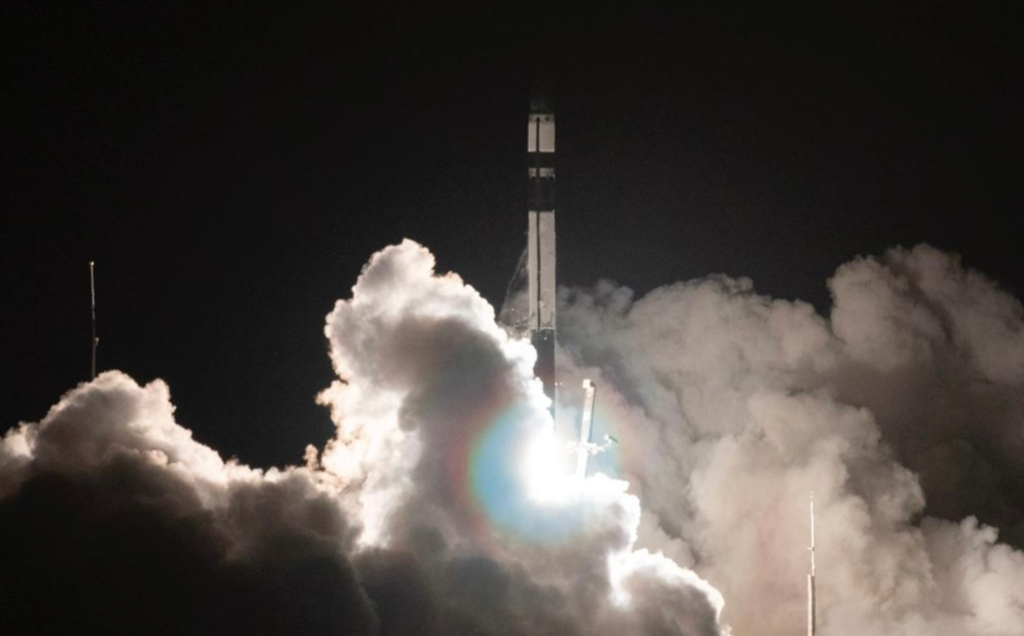
Rocket Lab Is About To Launch Again With NROL-199
Over the past few years, Rocket Lab has managed to grow in many different ways as a company. This has helped them become one of the leaders in small lift launch vehicle missions among other things. One way the company has become more capable is by increasing its launch cadence. The addition of a second launch pad at Launch Complex 1 is a great example.
This applies to the upcoming launch of NROL-199 only days after the first launch of this two rocket mission. While one rocket was on Pad A getting ready to lift off, the other was preparing on Pad B. This addition is just one way Rocket Lab is continuing to improve as a company. This specific mission will carry a national security payload.
The payload was designed, built, and operated by the National Reconnaissance Office in partnership with the Australian Department of Defence as part of a broad range of cooperative satellite activities with Australia. Here I will go more in-depth into the upcoming launch, its relation with the mission only days ago, the impact it has on Rocket Lab, and more.
Recent Updates

Over the past few days, Rocket Lab has been providing updates on the progress of these both these missions. This includes the success of the first launch earlier this month and the preparation for the second expected to happen only days from now. On July 13th, Rocket Lab tweeted saying, “MISSION SUCCESS! Our first of two back-to-back national security launches for the @NatReconOfc lifted off from Launch Complex 1 at 06:30 UTC, July 13. Congratulations to the NRO and @DefenceAust on a successful deployment. Welcome to orbit!” Soon after they followed up with another tweet that highlighted, “Just 15 days after our #CAPSTONE moon launch for @NASA, an Electron took to the skies again delivering a perfect mission for the @NatReconOfc. Now we’re counting down to the next one, scheduled for lift-off on July 22.” These tweets are referring to the first mission named The Wise One Looks Ahead.
Only a few days ago Rocket Lab provided more updates this time on the second of the two launches. On July 17th they tweeted mentioning, “As NROL-162 settles into orbit, NROL-199 is getting ready for its journey to space on Electron as early as July 21st UTC.” The next day on the 18th, NatReconOfc tweeted saying, “NRO is currently implementing payload software updates for NROL-199. As soon as the updates are implemented, NRO and Rocket Lab will provide a new launch date for NROL-199. Rocket Lab soon replied to this tweet pointing out, “That’s the beauty of responsive launch on Electron – we adapt to ever-changing mission requirements. Operating our own launch site gives our customers maximum flexibility on launch timing. We’ll be ready to launch when you are, NatReconOfc! New launch date for #NROL199 to come.”
Antipodean Adventure (NROL-199) is the second of two back-to-back Electron missions for the National Reconnaissance Office (NRO). The first mission, Wise One Looks Ahead (NROL-162) successfully lifted-off from Launch Complex 1 on July 13, 2022. The NROL-199 mission will carry a national security payload designed, built, and operated by the National Reconnaissance Office in partnership with the Australian Department of Defence as part of a broad range of cooperative satellite activities with Australia. The payload will support the NRO to provide critical information to government agencies and decision makers monitoring international issues. Both NROL-199 and NROL-162 missions are a demonstration of responsive launch under NRO’s Rapid Acquisition of a Small Rocket (RASR) contract for launching small satellites through a streamlined, commercial approach, and are the third and fourth missions contracted to Rocket Lab by the NRO under the contract. NROL-151 (RASR-1) was successfully deployed to space on a dedicated Electron launch in early 2020, followed by RASR-2 on another Electron launch in June 2020.
NRO & LC-1

The NRO is the leader in developing, acquiring, launching, and operating the nation’s intelligence, surveillance, and reconnaissance satellites to secure and expand America’s advantage in space. The NRO is building a diversified and resilient architecture of spacecraft and ground systems designed to meet the challenges of a changing space environment by accelerating innovation and leveraging strategic partnerships, backed by a highly skilled workforce. Since 1961, the NRO has pushed the envelope of U.S. space-based intelligence collection with boldness and ingenuity. Today, the NRO’s innovative legacy continues to thrive as it develops, acquires, launches, and operates the world’s most capable national security satellites. NROL-162 will strengthen the NRO’s ability to provide a wide-range of timely intelligence information to national decision makers and intelligence analysts to protect the United States’ vital interests and support humanitarian efforts worldwide.
These back to back launches are great examples of the importance of Rocket Lab’s launch complex and the use of both pads. Back in February of 2022, Rocket Lab announced the completion of its second orbital launch pad at Launch Complex 1 in New Zealand – the Company’s third dedicated pad for its Electron rocket – and confirmed the new pad’s first mission will be a dedicated commercial launch scheduled to lift-off within a week’s time. Pad B is based within Rocket Lab Launch Complex 1, the world’s first private orbital launch site, located in Mahia, New Zealand. The new pad is Rocket Lab’s third for the Company’s Electron launch vehicle and joins the existing Pad A at Launch Complex 1 and a third launch pad at Rocket Lab Launch Complex 2 in Virginia, USA. With two operational pads within the same launch complex, Rocket Lab doubles the launch capacity of its Electron launch vehicle. With two launch pads and private range assets at Launch Complex 1, concurrent launch campaigns are now possible from the site. This enables resilient access to space by accommodating tailored customer requirements or late changes to a spacecraft while keeping Rocket Lab’s manifest on schedule. Operating two pads also eliminates pad recycle time, ensuring a launch pad is always available for a rapid-response mission. Launching from a private launch complex, Rocket Lab is also able to avoid the lofty range fees and overheads typically associated with shared launch sites, resulting in a cost-effective launch service for satellite operators.
Rocket Lab founder and CEO, Peter Beck, said: “A reliable launch vehicle is only one part of the puzzle to unlocking space access – operating multiple launch sites so we can launch when and where our customers need to is another crucial factor. We are proud to be delivering responsive space access for our customers, making back-to-back missions possible within hours or days, not weeks or months. “Even with just one pad at Launch Complex 1, Electron quickly became the second most-frequently launched U.S. rocket every year. Now, with two pads at Launch Complex 1 and a third in Virginia, imagine what three pads across two continents can do for schedule control, flexibility, and rapid response for satellite operators globally.” More than 50 local construction workers and contractors were involved in the development of Launch Complex 1 Pad B, which includes a 66-ton launch platform and 7.6-ton strongback customized to the Electron launch vehicle. With Pad B operational, several roles are available now at Launch Complex 1 to support Rocket Lab’s increased launch cadence.
Rocket Lab’s Vice President – Launch, Shaun D’Mello, said: “With Pad B we’ve kept things efficient. Its systems and layout replicates Pad A and shares much of Pad A’s infrastructure including the Electron vehicle integration hangar, runway to the pad, and our own range control facility. With that, we’ve been able to double our operational capacity – all on a concrete area smaller than the average tennis court. I’m hugely proud of what the team has achieved: building and bringing a second pad online, all while continuing to service and operate Pad A for our Electron launches to date, and in the middle of a global pandemic no less.” All of which works towards Rocket Lab’s goal of responsive space. With responsive satellites needing responsive rockets, the third and final solution is the responsive launch site to fly them. Launchers which use public sites will always be at the whim of tight launch corridors, busy range schedules, and small gaps in overhead air traffic. A responsive launch site is one that stands ready to support rapid call-up launch with unrivalled launch opportunities – and with two orbital launch pads (a third at Launch Complex 2 on Wallops Island, Virginia, expected to be operational in 2022), private range control, and 120 flight opportunities a year, Rocket Lab Launch Complex 1 provides the possibility of back-to back launches within hours or days, not weeks or months.
Conclusion
As per usual Rocket Lab has been staying very busy over the past few weeks in preparation for the second launch apart of this mission. Thanks to multiple launch pads at LC-1 among other things, even though the company just launched days ago they are ready for another. We will have to wait and see how it progresses and the impact it has on the space industry.
